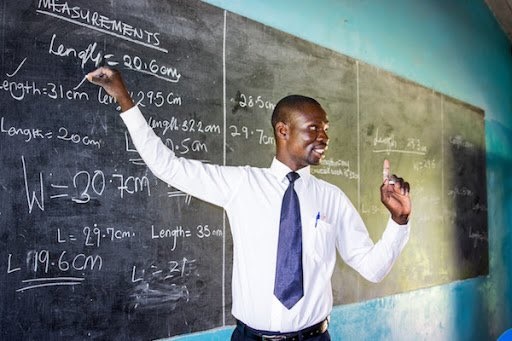How teachers can write better student reports covering learner attitudes, interests and conduct

Crafting Effective Academic Reports: Strategies for Teachers on Learner Attitudes, Interests, Conduct, and Concluding Remarks
Creating effective academic reports each term is an important task for teachers each time the term is coming to an end. These reports help parents understand the progress of their children and how they are doing at school. They also provide precious feedback for the students themselves. To write good reports or complete the report card in an excellent and professional way, teachers should focus on some essential strategies. These strategies will help teachers to include key components and use appropriate language. In this essay, we will explore how to write on attitudes, interests, and conduct and how to create useful and clear final observations.
Let us now look at the details on how teachers can write better student reports covering learner attitudes, interests and conduct. Do not skip a sentence.
First, let’s talk about student attitudes.
This section of the report card is important because it explains how a student feels about learning and school in general. It is important for teachers to observe the student during the term and take notes on their behaviour and involvement in the classroom. A teacher can write if the student is curious, motivated, and positive in their approach to learning. The use of simple and encouraging language is the best. For example, instead of saying “the student often shows little interest for the class”, it would be better to say, “the student loves to participate in discussions and shows excitement for new topics”. The encouraging phrases help to create a positive connection between the relationship and feelings of the student.
Subsequently, let’s move on to the student’s interests.
This part of the relationship should highlight the areas that capture the student’s attention. Here, teachers can mention specific topics or projects that the student enjoys. It is good to be specific and give examples. For example, if a student shows a love for science, the teacher could write: “The student is fascinated by experiments, in particular in our recent unit on plants”. This helps parents to understand what their child involves and can help them support learning at home. It also allows students to feel proud of their interests, which can encourage them to further explore these subjects.
Conduct is another key area in academic reports
This section describes how students behave in class and interact with classmates and teachers. The conduct does not mean only following rules, but it can also mean being respectful, working cooperatively and showing kindness. The use of a clear and constructive language is crucial here. A phrase like “the student sometimes struggles to remain concentrated during group work”, can be changed “, with some indications during group activities, the student can contribute with precious ideas and work well with peers”. In this way, attention remains on the positive aspects and encourages improvement rather than underlining problems.
In addition, it is important to use a support tone and kind throughout the report. Teachers should keep in mind that reports are often read by parents or guardians who can feel worried or worried about the progress of their child. Using friendly and respectful language, teachers can help to ensure that parents see the value in the report. Words such as “encouraging”, “support” and “dedicated” create a positive atmosphere and show that the teacher takes care of the student’s learning journey.
While considering the structure of academic report, it can also be useful to have a coherent layout. The start of each section with a brief summary can help guide parents through the report in a more fluid way. For example, the teacher could write: “This term, we have seen great progress in the attitude of the name of [student] towards learning. They are anxious to participate and work well with others”. This opening sentence gives the tone and gives a clear image of what to expect in that section.
Final observations are a crucial part of any academic report. This part should bind everything together. It is the possibility of the teacher to share the final thoughts and encourage further development. A good statement could be: “Overall, [the student’s name] has shown a great effort in this term. With continuous support, I think they will prospect the next term. I encourage you to read together at home and explore topics that interest them.” This demonstrates the teacher’s investment in the student’s future and provides a clear idea of how parents can help.
In addition, it is a good idea to end up with an open invitation for communication. For example, teachers can write: “Feel free to contact if you have questions or you need more resources to help support [the student’s name] at home”. This creates a partnership between the teacher and the parents, which can be very useful for the growth of the student.
Take a look at these great examples : 2024-2025 Report Card Grading, Student Attitudes, Interests and Conduct Samples for Teachers
The writing of academic reports effectively requires attention to detail and a focus on the key components. By covering the student’s attitudes, interest, conduct and carefully realizing the final observations, teachers can create reports that are both instructive and useful. The use of a simple, kind and support language encourages a positive response from parents and makes the relationship accessible to everyone. The purpose of these reports is to celebrate the student’s results, highlight the areas for growth and guide both parents and students on their learning journey. Using these strategies, teachers can guarantee that their reports are effective tools for communication and support.
With this knowledge, you should now be able to write better student reports covering learner attitudes, interests and conduct.





 Govt approves GHC1billion to pay unpaid teachers, nurses salaries
Govt approves GHC1billion to pay unpaid teachers, nurses salaries  NSA introduces emergency gazette service to address national service personal documentation issues
NSA introduces emergency gazette service to address national service personal documentation issues  Gov’t makes GETFund financier of Free SHS policy
Gov’t makes GETFund financier of Free SHS policy  Buy 2026 BECE Focused Mock Questions and Answers for October, September and August
Buy 2026 BECE Focused Mock Questions and Answers for October, September and August